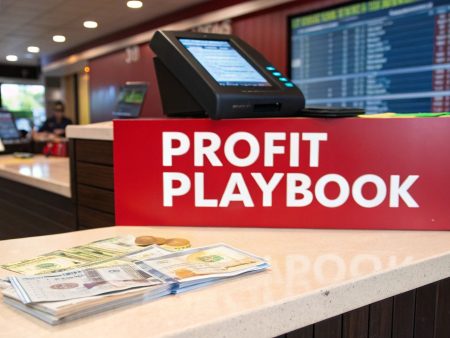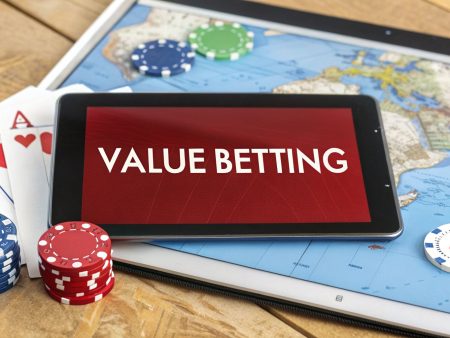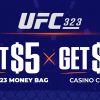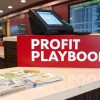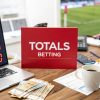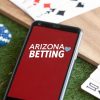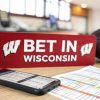If there's one habit that truly separates the sharps from the rest of the pack, it's this: getting the best price on every single bet. This is the art of sports betting odds comparison, often called "line shopping," and it’s the bedrock of any long-term winning strategy. It's as simple as comparing odds across different sportsbooks for the same game to find the most profitable line, which automatically boosts your winnings and chips away at the house edge.
Why Odds Comparison Is a Winning Strategy
Think about it like you’re shopping for anything else. You wouldn't walk into the first electronics store and buy a new TV without seeing what other places are charging. It’s just common sense to shop around for the best deal. That same logic is even more critical in sports betting.
Every sportsbook, from offshore giants like Bovada and Xbet to popular books like MyBookie and BetUS, sets its own odds. They all use their own blend of complex algorithms, data, and market analysis to create a line. They also tweak their numbers based on how their own customers are betting, which leads to small but crucial differences from one book to the next.
Maximizing Returns Through Small Differences
Those tiny price differences are exactly where profitable bettors find their edge. Seeing a point spread at -105 at a site like Sportsbetting.ag instead of the standard -110 might not look like a big deal, but over hundreds of bets, the impact on your bankroll is massive. To win $100, you’re risking $110 at -110 odds, but only $105 at -105. That $5 saved on every single win adds up faster than you'd think.
This gets even more powerful when you're betting on underdogs.
Nailing a moneyline at +150 instead of +140 means your $100 bet pays out $150 in profit instead of $140. Hunting down that extra $10 on every winning underdog bet is a core part of any sharp's playbook and directly juices your return on investment.
Key Offshore Sportsbooks and Their Odds Pricing
The offshore market is a perfect example of why you need to shop around. Each book has its own personality and pricing philosophy, creating a diverse marketplace where you can hunt for value.
| Sportsbook | Typical Odds Characteristic | Best For Bettors Who… |
|---|---|---|
| MyBookie | Offers competitive moneyline odds, especially on popular US sports. | Focus on straightforward moneyline wagers on the NFL and NBA. |
| BetUS | Known for early line releases and a wide variety of prop bets. | Want to get their bets in early before the market moves. |
| Bovada | Features user-friendly odds and is great for recreational bettors. | Are newer to betting and want a simple, reliable platform. |
| Sportsbetting.ag | Often posts reduced juice (-108 or -105) on spreads and totals. | Prioritize long-term value by minimizing the house edge. |
| Xbet | Provides strong odds on niche sports and international events. | Bet on a wide range of sports beyond the major American leagues. |
| BetAnything | A newer player known for aggressive lines to attract users. | Are looking for unique value opportunities and competitive pricing. |
At the end of the day, a smart sports betting odds comparison strategy isn't about finding one "best" sportsbook. It's about having accounts at a few solid places—like BetUS, MyBookie, Bovada, and Xbet—so you can always pick the single best price available for the exact bet you want to make. That discipline is what turns sports betting from a guessing game into a calculated investment.
How To Read and Interpret Betting Odds
Before you can really start comparing sports betting odds, you need to speak the language. Odds aren't just random numbers on a screen; they're the core of every wager, telling you the implied probability of an outcome and exactly how much you stand to win. It might look a little intimidating at first, but getting a handle on the three main formats is a simple skill that unlocks your ability to spot real value at top sites like MyBookie, Bovada, and BetUS.
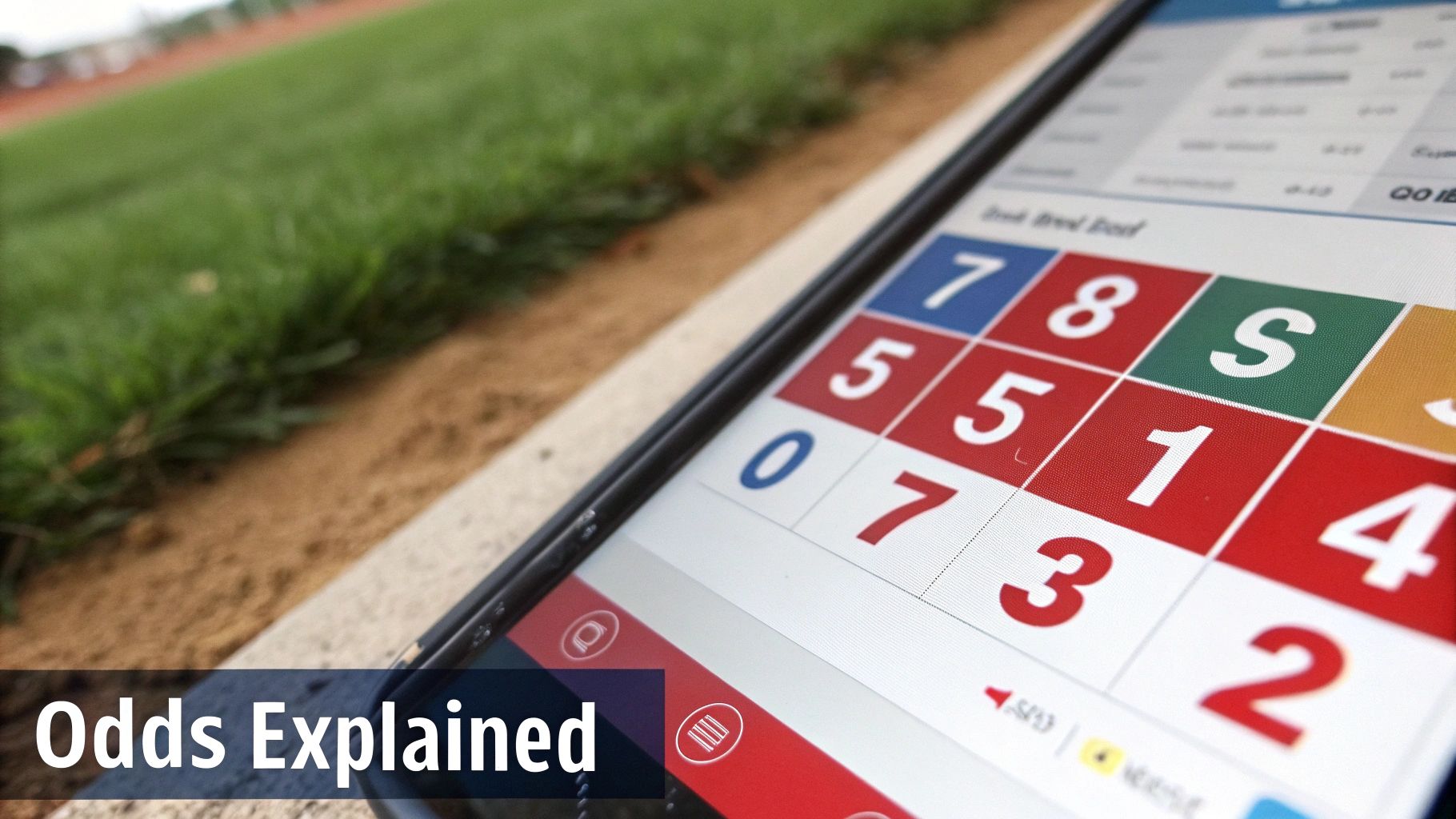
Let's demystify the numbers you see on every betting line. We’ll break down American, Decimal, and Fractional odds with straightforward examples so you can confidently read any line, calculate your risk, and know your potential reward.
American Odds: The Plus and Minus System
Walk into any US-facing sportsbook like Bovada, Xbet, or MyBookie, and you'll be greeted by American odds. The whole system is built around a baseline of $100, using plus (+) and minus (-) signs to quickly show you who’s the favorite and who’s the underdog.
- Minus Sign (-): This points to the favorite. The number tells you how much money you have to risk to win $100. For example, odds of -150 mean you need to bet $150 to walk away with a $100 profit.
- Plus Sign (+): This signals the underdog. Here, the number shows how much you’ll profit on a $100 bet. Odds of +130 mean your $100 wager will net you $130 in profit if it hits.
It's actually a pretty intuitive format once you get the hang of the favorite/underdog dynamic. For a deeper dive, you can learn more about how to read sports betting odds in our complete guide.
Decimal Odds: The Global Standard
Decimal odds are the go-to format in Europe and much of the world, but most offshore books like BetUS and Bovada give you the option to switch to them. They are arguably the simplest to understand. The number you see is the total return you'll get for every $1 you bet—that includes your original stake plus your profit.
Calculating your payout is just simple multiplication: stake x decimal odds. So, if the odds are 2.50 and you put down $100, your total return is $250 (your $100 stake back plus $150 in profit). Anything over 2.00 is an underdog, and anything under is a favorite. Easy.
Fractional Odds: The Traditional Format
Fractional odds are the old-school format, still huge in the UK and a staple in horse racing. They look like a fraction, such as 5/1 or 2/5, and show the potential profit relative to your stake.
The formula is as basic as it gets: (Stake x Numerator) / Denominator = Profit. A $10 bet at 5/1 odds would profit ($10 x 5) / 1 = $50. On the flip side, a bet at 2/5 odds means you win $2 for every $5 you stake.
You won't see them as often for sports like football at books such as Sportsbetting.ag or Xbet, but knowing how to read them is a must for any well-rounded bettor.
Odds Format Conversion and Payout Example on a $100 Bet
To really see how these formats connect, let's look at how the same wager is displayed across all three systems. This table shows how each format represents the identical implied probability and potential payout for a $100 bet.
| Odds Format | Example Odds | Implied Probability | Payout on $100 Bet (Profit) | Total Return |
|---|---|---|---|---|
| American | -150 | 60.0% | $66.67 | $166.67 |
| Decimal | 1.67 | 60.0% | $66.67 | $166.67 |
| Fractional | 2/3 | 60.0% | $66.67 | $166.67 |
Getting these conversions down is the first step. It ensures that when you’re line shopping at BetAnything, Bovada, or BetUS, you're making an apples-to-apples comparison, which is the key to spotting the most profitable wager available.
Comparing Odds at Top Offshore Sportsbooks
Alright, so you’ve got the basics of reading odds down. Now for the fun part: line shopping. This is where the rubber meets the road, and a sharp sports betting odds comparison strategy is what separates casual bettors from profitable ones. The truth is, no two sportsbooks are the same. Each one prices its lines based on its own risk tolerance, book balancing, and the betting patterns of its customers.
We're about to put some of the biggest offshore sportsbooks under the microscope. Let's look at how heavy hitters like MyBookie, Bovada, Xbet, and BetUS actually stack up. By digging into the vig on spreads, the value on moneylines, and the pricing on props, you'll see exactly how much your payout can swing from one book to another.
The Critical Role of Vig or Juice
Every bet you place comes with a hidden fee—the "vig" or "juice." It's the commission the sportsbook takes for its trouble. For most point spreads and totals, the standard price is -110, which means you have to risk $110 just to win $100. Finding a book that offers a better price, known as "reduced juice," is a game-changer for your bankroll.
For example, Sportsbetting.ag has built a reputation on offering reduced juice lines, often posting odds at -108 or even -105 on major games. While a book like MyBookie or Bovada might stick closer to the industry-standard -110, those small savings at a reduced juice book compound massively over time.
It's a small difference, but it directly lowers the win rate you need to be profitable.
Head-to-Head Odds Comparison for a Sample NFL Game
To see this in action, let's invent a matchup between the Kansas City Chiefs and the Baltimore Ravens and see how the odds might look across some of the top 10 offshore sportsbooks for US players in 2025 you must try. Pay close attention to the small but crucial differences.
| Sportsbook | Kansas City Chiefs Moneyline | Baltimore Ravens Moneyline | Point Spread | Over/Under Total |
|---|---|---|---|---|
| Bovada | +125 | -145 | Chiefs +2.5 (-110) | 48.5 (-110) |
| BetUS | +120 | -150 | Chiefs +2.5 (-115) | 48.0 (-110) |
| MyBookie | +122 | -148 | Chiefs +2.5 (-110) | 48.5 (-110) |
| Sportsbetting.ag | +128 | -142 | Chiefs +2.5 (-108) | 48.5 (-108) |
| Xbet | +125 | -145 | Chiefs +2.5 (-110) | 48.5 (-110) |
| BetAnything | +130 | -140 | Chiefs +2.5 (-105) | 48.5 (-105) |
This table makes a few things crystal clear. If you think the Chiefs are going to win outright, BetAnything gives you the best bang for your buck at +130. But if you're taking the points, both Sportsbetting.ag and BetAnything offer a much better price thanks to their reduced juice. This simple comparison is proof that where you place your bet has an immediate impact on your wallet.
Finding Value in Moneyline Underdogs and Favorites
Moneyline pricing, especially on underdogs, is often where you see the biggest differences between sportsbooks. One book might offer a more tempting price on the underdog to attract bets and balance their liability. In our example, the gap between betting the Chiefs at BetUS (+120) and BetAnything (+130) is an extra $10 in your pocket on a $100 bet.
This is the entire point of line shopping. It’s about finding the book offering the most generous price on the exact outcome you want to bet. It’s why serious bettors have accounts at multiple sportsbooks—to pounce on these differences the second they pop up.
As the market gets bigger, these pricing wars are only getting more intense. The global sports betting market hit an estimated $102.4 billion in 2024 and is on track to blow past $265.5 billion by 2034. More bettors mean more competition, forcing books like Bovada, MyBookie, and BetAnything to adjust their lines constantly. This creates more opportunities for those of us paying attention.
This infographic hammers home how even small odds differences translate to real money.
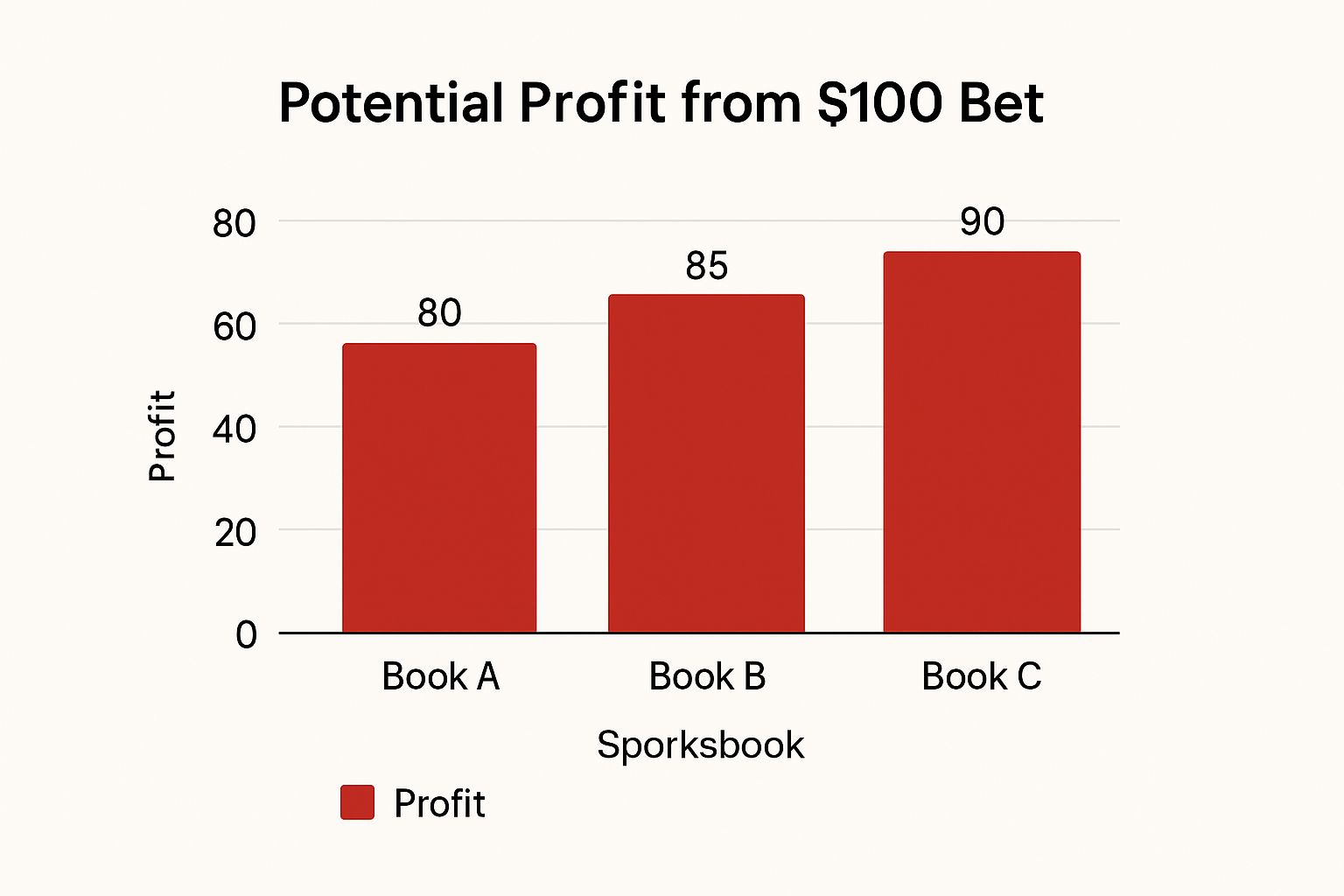
As the chart shows, a bettor who shopped for the best line earned a 12.5% bigger profit than someone who just took the first odds they saw.
Generosity in Prop and Futures Markets
The importance of a good sports betting odds comparison doesn't stop with game lines. It's just as crucial, if not more so, when you're betting on props and futures.
- Player Props: The odds on a quarterback's passing yards can be all over the place. Bovada might list Patrick Mahomes' line at 275.5 yards (-115), while MyBookie has the same line at a better price of (-110), and Xbet may offer unique player matchup props.
- Futures Bets: Looking to bet on a team to win the Super Bowl? The odds can vary wildly from book to book. You might see a team at +800 on BetUS but find them at +900 on Sportsbetting.ag.
These secondary markets are often less "efficient," meaning the bookmakers disagree more on the true odds. For a bettor who does their homework and shops around, this is where you can find some incredible value.
The ultimate strategy is to build a portfolio of sportsbooks. You want your go-to options like Bovada and MyBookie, a reduced juice specialist like Sportsbetting.ag, a line-setter like BetUS, and maybe an aggressive new player like BetAnything. Having this kind of access ensures you can always lock in the best possible return on every single bet you make.
Knowing a good price when you see one is half the battle. The other half—actually finding and locking in that price—is where the real work begins. This is what we call line shopping, and turning it into a regular habit is what separates the pros from the Joes. It's a discipline built on being prepared and ready to act fast.
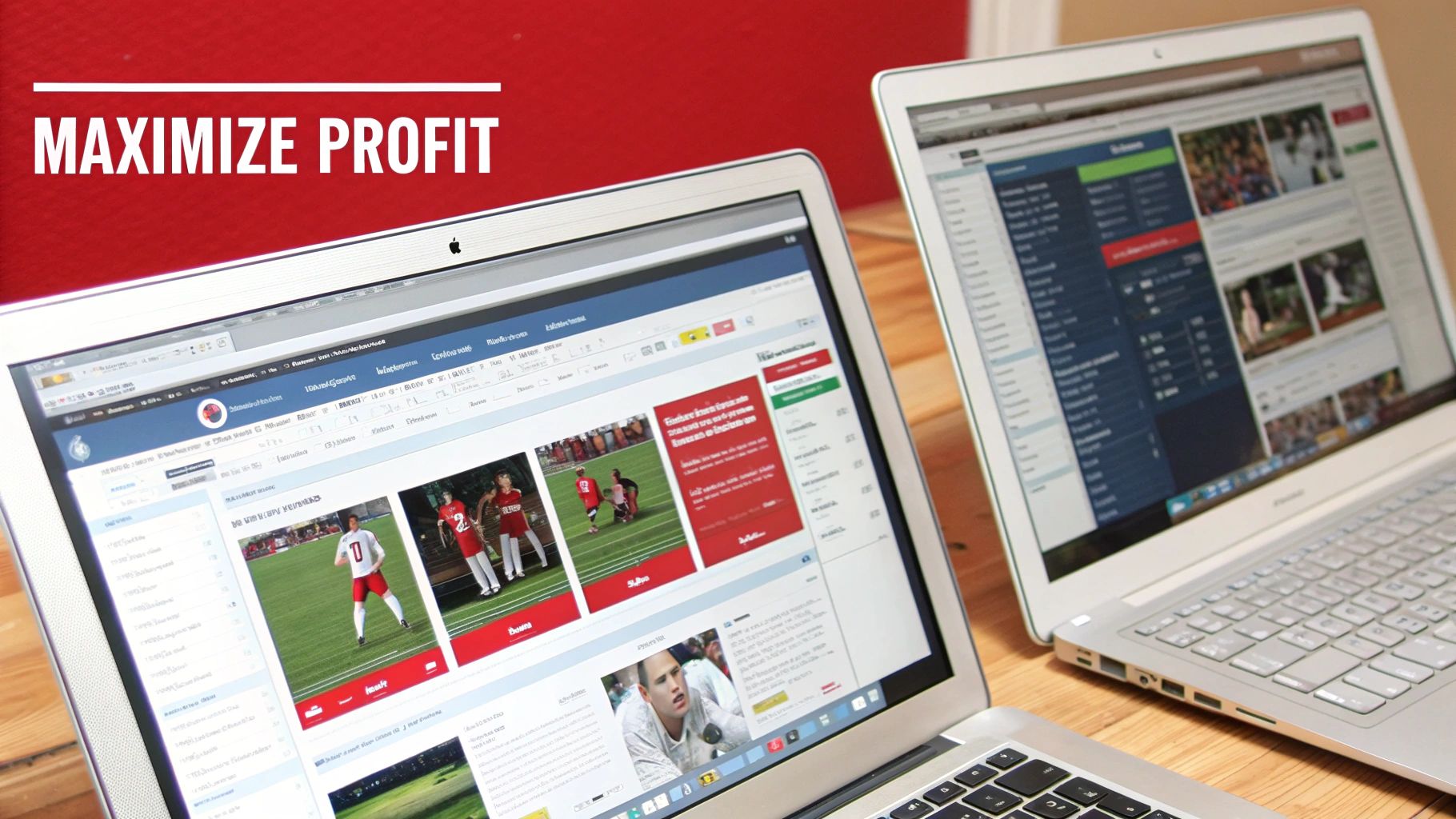
The first step is simple, but it’s absolutely non-negotiable: you need accounts at multiple sportsbooks. Sticking to just one book is like only having one gas station in town—you’re at the mercy of whatever price they decide to charge that day.
Building Your Sportsbook Portfolio
To line shop like a pro, you need options. I recommend keeping funded accounts at a minimum of 3 to 5 different sportsbooks. The key is to build a diverse portfolio with books that have different pricing philosophies. This gives you a wider market to pick from.
A solid lineup might look something like this:
- An Industry Leader: Think Bovada or MyBookie. These are the big dogs known for offering a massive menu of markets and solid, reliable odds.
- A Reduced Juice Specialist: A book like Sportsbetting.ag is a must-have. They often post lines at -108 or even -105, which saves you a cut on every single spread bet you make.
- An Early Line Book: You'll want an account at a place like BetUS, which is often one of the first to market with their odds. This gives you a sneak peek at where the numbers are opening.
- An Aggressive Newcomer: Keep an eye out for newer books like BetAnything. They often throw out juicier odds on underdogs or unique props to carve out a niche and attract bettors.
- A Niche Specialist: A site like Xbet can be valuable for its strong odds on less common sports or international events, rounding out your portfolio.
With a setup like this, you're always ready to jump on a good number. If Bovada is showing the Chiefs at +120 but BetAnything has them at +130, you don't have to scramble to sign up and deposit. You’re already funded and can pounce on that better value instantly.
The Two-Step Verification Process
In sports betting, lines move in the blink of an eye, so speed is everything. Modern odds comparison tools are fantastic for getting a bird's-eye view of the market. They scan dozens of books, including places like Xbet, MyBookie, and BetUS, and show you the best available line in seconds.
But here's a pro tip: technology isn't perfect. Sometimes data feeds lag, and the line you see on a third-party tool might already be old news by the time you click over.
The best approach combines tech with a quick manual check. Use an odds comparison tool to quickly spot the top two or three books with the best price. Then, immediately open up those sites—like BetUS, Bovada, and Sportsbetting.ag—to confirm the live odds yourself and get your bet down.
This simple two-step method gives you the best of both worlds: the speed of automation and the certainty of direct verification. It ensures you’re always betting on the most current, accurate number.
Advanced Line Shopping Tactics
Once you get the hang of the basics, you can start looking for more advanced opportunities. These strategies are all about spotting those little market inefficiencies that create short-lived windows of value for sharp bettors.
One classic move is hunting for "stale lines." This is an old number that a book has been slow to update after big news breaks—like a star player getting injured or a sudden weather shift. While most books like BetUS and MyBookie adjust on the fly, smaller or slower operators might lag, leaving a juicy, outdated price on the board for a few precious minutes.
Another next-level concept is identifying "steam moves." A steam move happens when a flood of money from respected professional betting groups pours in on one side of a game. This forces sportsbooks to slash their lines to reduce their risk. If you can spot a steam move as it’s happening, it’s a powerful signal of where the sharp money is going, giving you a chance to ride their coattails before the value is gone.
Understanding Why Betting Lines Move
To really get an edge in sports betting, you have to look past the numbers on the screen and figure out why they're changing. Betting lines aren't set in stone. They're living, breathing markets that shift based on new information and, most importantly, where the money is going. This constant dance between the "opening line" and the "closing line" is where sharp bettors find their opportunities.
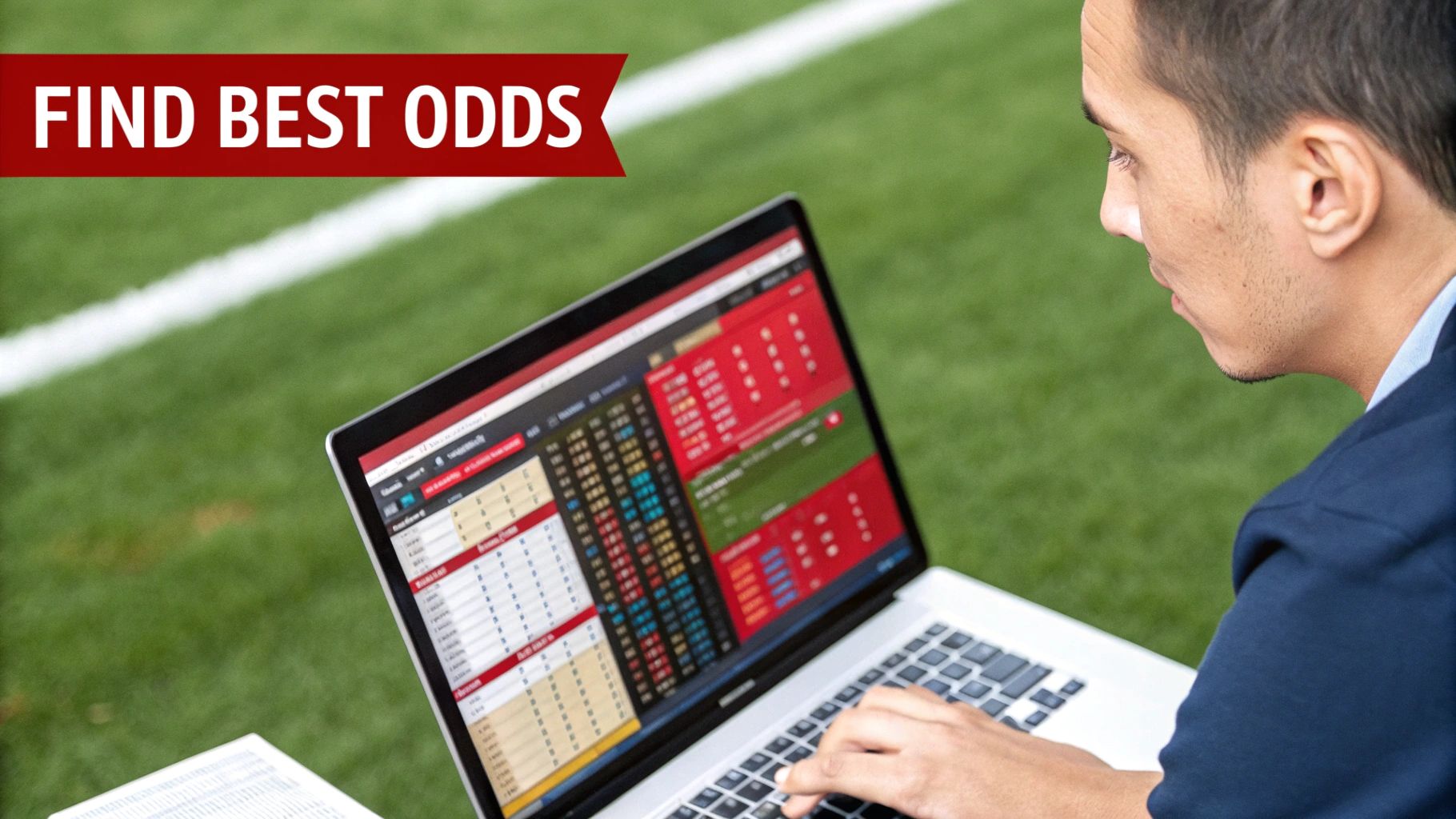
The life of a betting line is a fascinating tug-of-war. On one side, you have the sportsbook trying to balance its books. On the other, you have professional bettors and the general public pushing and pulling the numbers. Knowing what's causing these shifts is the key to timing your bet perfectly for maximum value.
The Influence of Public Money
The most common reason a line moves is just simple supply and demand. When a huge chunk of the public all bets on one side of a game, sportsbooks like MyBookie, Bovada, and Xbet have to adjust the odds to limit their own risk. Their main goal is to get balanced action on both sides so they can make a tidy profit from the vig, no matter who wins.
For example, if 80% of the money is coming in on the Kansas City Chiefs at -6.5, the sportsbook will likely move the line to -7 or even -7.5. This makes the other side look more appealing, encouraging bets on the underdog to balance things out. This kind of move is often a reaction to popular sentiment, not a true adjustment of the game's probabilities.
The Impact of Sharp Money
Public money causes a slow, predictable drift. "Sharp money" causes an earthquake. Sharps are professional bettors and betting syndicates who wager massive amounts, and sportsbooks have immense respect for their opinions. When a wave of sharp money hits a line at a book like BetUS or BetAnything, you can bet the oddsmakers are going to react, and fast.
A "steam move" is what happens when sharps hammer one side of a line across multiple sportsbooks at the same time. This coordinated attack forces a market-wide correction as books like Xbet, MyBookie, and Sportsbetting.ag scramble to adjust their numbers before they get taken to the cleaners.
Following these steam moves can be a solid strategy. It's often a giant flashing sign pointing to where the smartest bettors have found an edge.
Game Day Factors and Critical Information
Beyond the money flow, real-world events are a huge driver of line movement. Nothing swings a line faster than a piece of critical, last-minute information that directly affects a team's chances.
These catalysts can pop up at any time:
- Key Injury Reports: A star quarterback being listed as a game-time decision can move a point spread by several points in a heartbeat. The second he's ruled in or out, the line will jump.
- Last-Minute Lineup Changes: An unexpected scratch in a basketball or baseball starting lineup can tweak the odds, especially if it's a key offensive weapon or a defensive anchor.
- Sudden Weather Changes: In outdoor sports like football, an unexpected forecast for high winds or heavy snow can cause the Over/Under total to plummet as everyone expects a low-scoring slugfest.
This is all happening in a market that's exploding. North America is on track to become the world's fastest-growing sports betting market, a boom kicked off by the 2018 Supreme Court decision. With mobile and online betting now accounting for over 78% of global revenues, the fight among sportsbooks like Bovada and MyBookie to post sharp, dynamic odds is more intense than ever.
Knowing how to tell the difference between a line move caused by public hype and one driven by sharp money or critical news is what separates winning bettors from the rest. It’s a skill that helps you understand not just what the line is, but why it is what it is. To get a feel for how these numbers are born, check out our guide on who creates NFL betting lines to see where it all begins.
Still Have Questions About Odds Comparison?
Even the sharpest bettors run into questions when comparing odds. It's just part of the game. Getting straight answers is key to building confidence and making sure your line-shopping process is airtight. Let’s tackle some of the most common things that trip people up.
Think of this as turning the theory we've discussed into practical knowledge you can use on your very next wager.
How Much Do Those Tiny Odds Differences Really Matter?
A lot more than you'd think. Seeing a line move from -110 to -105 might not look like a big deal, but its impact on your bankroll over time is massive. To win $100, you have to risk $110 at -110 odds. At -105, you only need to risk $105.
That $5 you save might seem small, but it adds up with every single winning ticket. Consistently getting that better price drastically lowers the win rate you need to be profitable. Over an entire season, it’s often the single biggest difference between finishing in the black or the red.
This is exactly why shopping lines across different books like Bovada, MyBookie, BetUS, and Sportsbetting.ag isn't just a suggestion—it's a fundamental strategy for any bettor serious about winning.
Should I Use an Odds Comparison Tool or Just Do It Myself?
Honestly, the best approach is a mix of both. Start with technology, but finish with a manual check. Odds comparison tools are fantastic for getting a quick, bird's-eye view of the entire market. They save you a ton of time by instantly showing which sportsbooks are offering the best numbers on a game.
But here’s the catch: odds can shift in a heartbeat, and those third-party tools sometimes lag behind the live market. The pro move is to use a tool to flag the top three or four books—say, Sportsbetting.ag, Xbet, and BetAnything—for a specific bet. Then, you click over to those sites directly to confirm the live odds before you lock in your wager. You get the speed of automation with the accuracy of a direct look.
Is There One Sportsbook That Always Has the Best Odds?
This is one of the biggest myths in betting. The short answer is no. There is no single "best" sportsbook that consistently has the top price on every game, every day. The market is just too dynamic.
The "best" book changes constantly. BetAnything might have the best moneyline on an NFL underdog one week, while Sportsbetting.ag is running a reduced juice special on NBA spreads. The value depends on the sport, the type of bet, and even which side you're on. A book like Xbet might have the best odds on a soccer match, while Bovada leads on props.
This is precisely why smart bettors have funded accounts at several different sportsbooks. The goal of a sports betting odds comparison strategy isn't to find one holy grail sportsbook. It’s about building a personal portfolio of betting outs. This gives you the power to cherry-pick the absolute best price available for every single bet you make, squeezing maximum value out of every decision.
At USASportsbookList, we give you the expert reviews and deep-dive analysis you need to build that winning portfolio. Find your next go-to sportsbook by checking out our comprehensive guides at https://usasportsbooklist.com.
